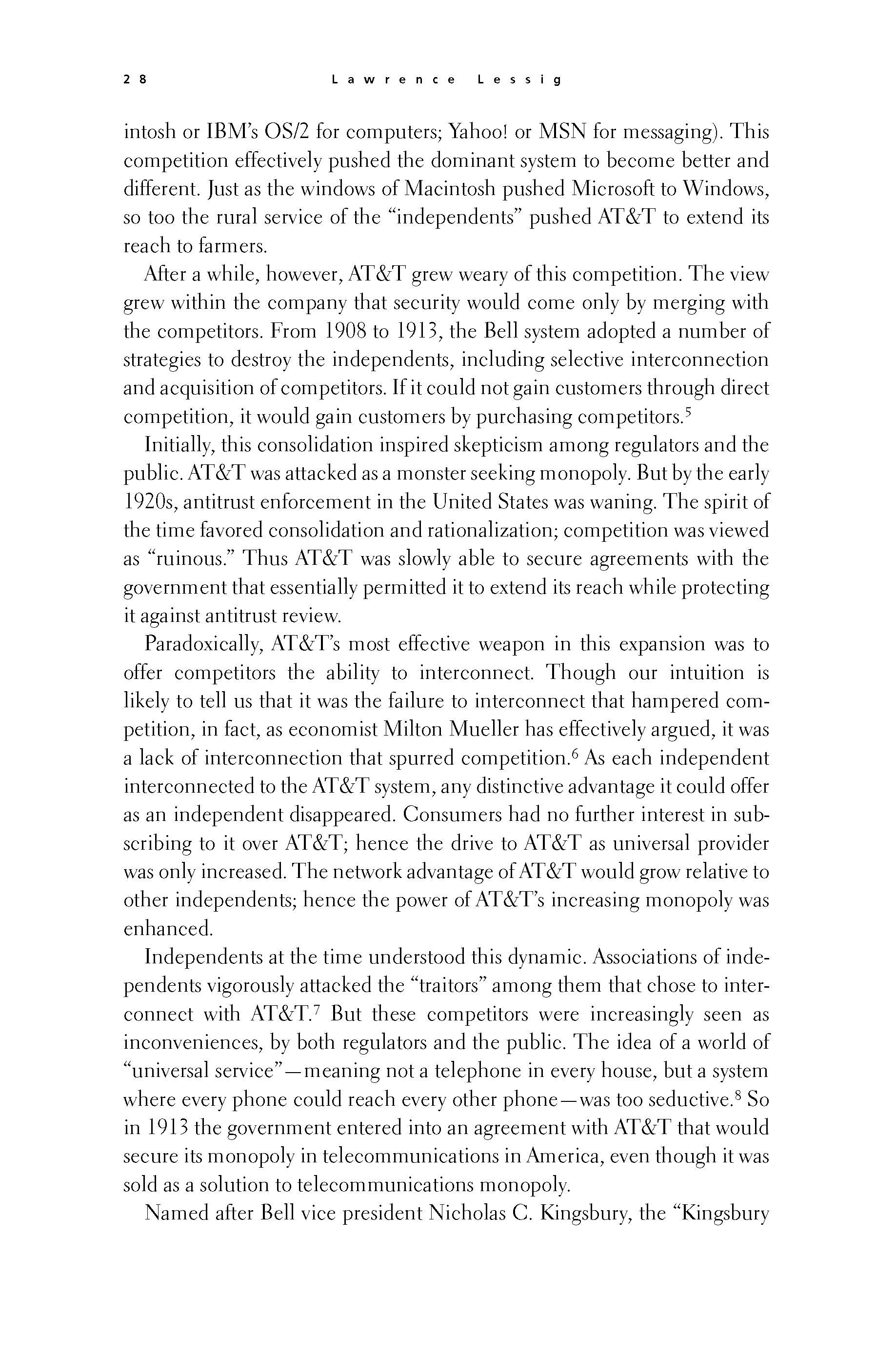 p027 _
-chap- _
toc-1 _
p028w _
toc-2 _
+chap+ _
p029
p027 _
-chap- _
toc-1 _
p028w _
toc-2 _
+chap+ _
p029
intosh or IBM's OS/2 for computers; Yahoo! or MSN for messaging). This
competition effectively pushed the dominant system to become better and
different. Just as the windows of Macintosh pushed Microsoft to Windows,
so too the rural service of the "independents" pushed AT&T to extend its
reach to farmers.
After a while, however, AT&T grew weary of this competition. The view
grew within the company that security would come only by merging with
the competitors. From 1908 to 1913, the Bell system adopted a number of
strategies to destroy the independents, including selective interconnection
and acquisition of competitors. If it could not gain customers through direct
competition, it would gain customers by purchasing competitors.[3-5]
Initially, this consolidation inspired skepticism among regulators and the
public. AT&T was attacked as a monster seeking monopoly. But by the early
1920s, antitrust enforcement in the United States was waning. The spirit of
the time favored consolidation and rationalization; competition was viewed
as "ruinous." Thus AT&T was slowly able to secure agreements with the
government that essentially permitted it to extend its reach while protecting
it against antitrust review.
Paradoxically, AT&T's most effective weapon in this expansion was to
offer competitors the ability to interconnect. Though our intuition is
likely to tell us that it was the failure to interconnect that hampered com-
petition, in fact, as economist Milton Mueller has effectively argued, it was
a lack of interconnection that spurred competition.[3-6] As each independent
interconnected to the AT&T system, any distinctive advantage it could offer
as an independent disappeared. Consumers had no further interest in sub-
scribing to it over AT&T; hence the drive to AT&T as universal provider
was only increased. The network advantage of AT&T would grow relative to
other independents; hence the power of AT&T's increasing monopoly was
enhanced.
Independents at the time understood this dynamic. Associations of inde-
pendents vigorously attacked the "traitors" among them that chose to inter-
connect with AT&T.[3-7] But these competitors were increasingly seen as
inconveniences, by both regulators and the public. The idea of a world of
"universal service" -- meaning not a telephone in every house, but a system
where every phone could reach every other phone -- was too seductive.[3-8] So
in 1913 the government entered into an agreement with AT&T that would
secure its monopoly in telecommunications in America, even though it was
sold as a solution to telecommunications monopoly.
Named after Bell vice president Nicholas C. Kingsbury, the "Kingsbury
[[28]]
p027 _
-chap- _
toc-1 _
p028w _
toc-2 _
+chap+ _
p029